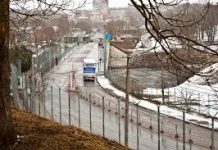
Poland and Slovakia have signed a letter of intent to collaborate on ammunition production and work together on acquiring armored vehicles, tanks, and air defense systems.
During a meeting in Warsaw on Monday, Polish Deputy Prime Minister and Defense Minister Władysław Kosiniak-Kamysz and his Slovak counterpart, Robert Kaliňák, formalized this agreement.
One key aspect of the partnership involves Poland utilizing Slovakia’s expertise and technology in manufacturing 155-millimeter artillery shells. In late 2024, Warsaw established a new fund of approximately PLN 3 billion ($759 million) to encourage both domestic and international investment in expanding Poland’s ammunition production, particularly focusing on 155 mm rounds.
Another initiative centers on the joint development of an armored fighting vehicle based on Poland’s eight-wheel-drive Rosomak. This vehicle, produced by the state-owned defense company PGZ under a Finnish Patria license, will be equipped with the Turra 30 remote-controlled turret, designed by Slovakia’s EVPÚ.
Additionally, Poland has proposed supplying Slovakia with K2 Black Panther tanks, which will be manufactured domestically under a license from South Korea’s Hyundai Rotem. Poland’s Ministry of Defense signed a framework agreement in July 2022 to procure up to 1,000 K2 tanks. Of these, 180 units are already on order from South Korea, while the remaining 820, in the K2PL variant, may be produced by Poland’s defense industry.
Slovakia, which is looking to acquire up to 104 new tanks, is considering several options. Last month, Kaliňák mentioned the CV90120, a light tracked vehicle developed by BAE Systems Hägglunds, as one possibility. Other options reportedly include Germany’s KNDS-manufactured Leopard 2A8 tanks or refurbished Leopard 2A4 models upgraded by Slovak defense firms.
Lastly, Slovakia has expressed interest in purchasing the Piorun (Thunderbolt), a portable air defense system produced by PGZ. The weapon has gained prominence due to its widespread use by Ukrainian forces against Russian troops, leading to increased exports to various European countries, as well as the United States, Japan, and Indonesia.




